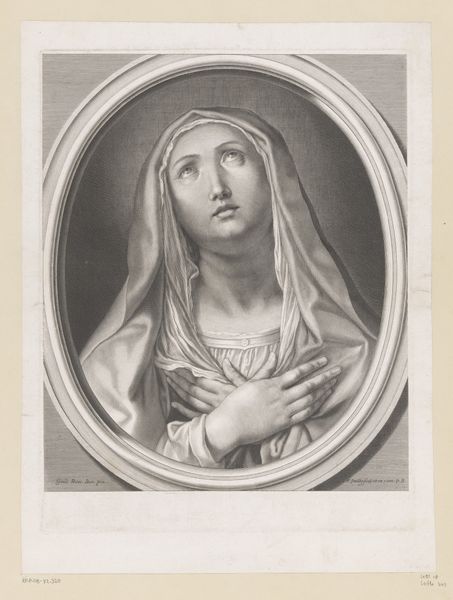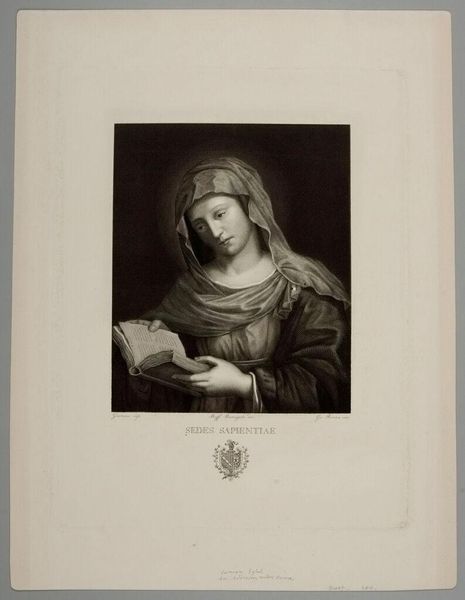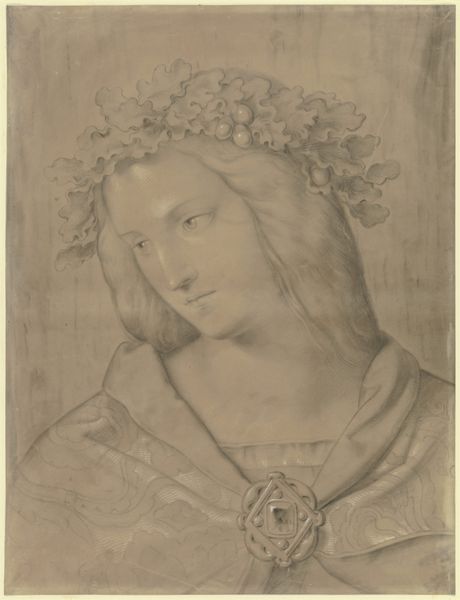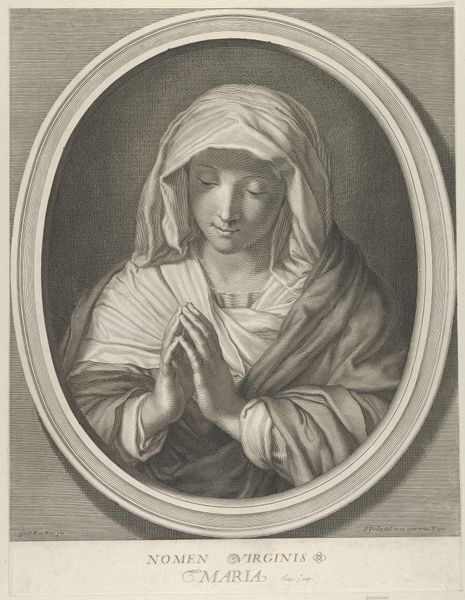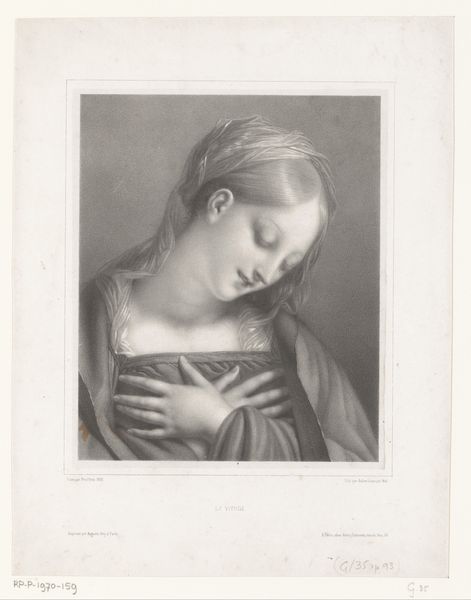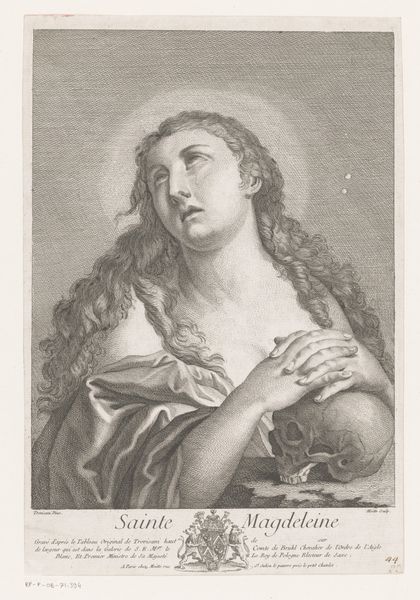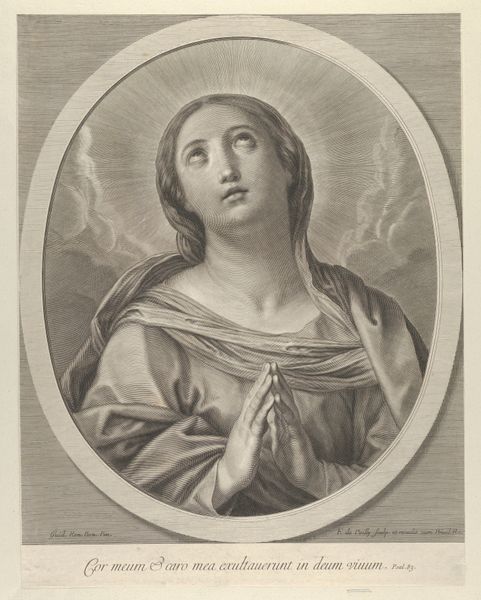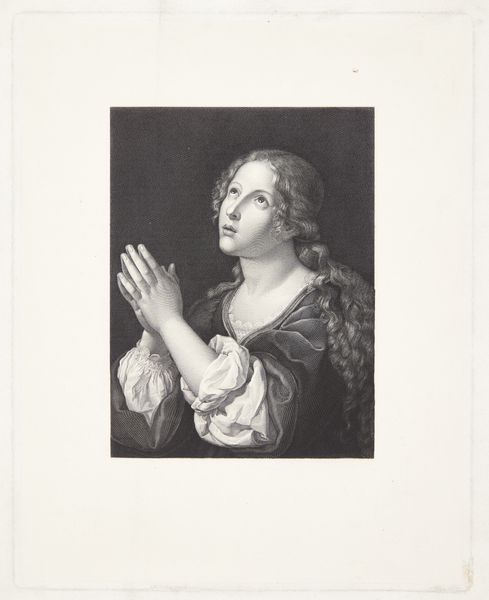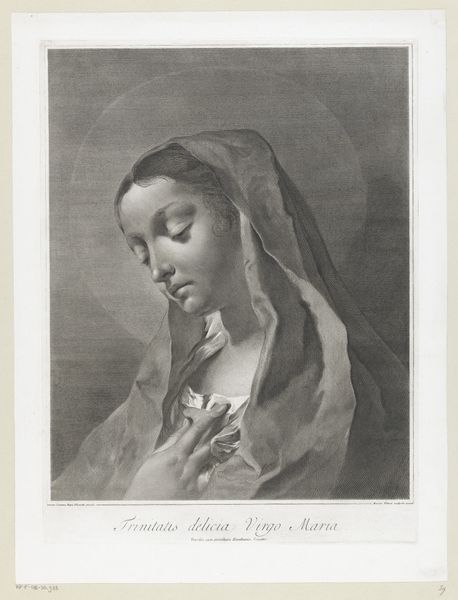
lithograph, print
#
portrait
#
lithograph
# print
#
figuration
#
romanesque
#
19th century
#
line
#
history-painting
#
academic-art
Dimensions: 448 mm (height) x 390 mm (width) (billedmaal)
Curator: Welcome. Before us is a 19th-century lithograph titled "St. Katarina," a print held here at the SMK, Statens Museum for Kunst. Editor: She's quite striking, isn't she? There's a certain serene quality to her gaze, but I find her demure expression juxtaposed with what seems to be the hint of a martyr's palm in her left hand intriguing. There’s this underlying tension, between virtue and violence perhaps. Curator: Precisely. This representation of Saint Catherine speaks to the prevalent historical narratives of female sainthood that emphasize both piety and suffering. What’s really striking, beyond the historical context, is the use of the lithographic technique to evoke the Romanesque period's artistic sensibilities, an era deeply intertwined with the lives of these holy figures. This intersection really reinforces the significance and power of imagery in reinforcing belief and cultural values. Editor: And I see how the academic artistic style enhances this sense of reverence, doesn't it? This, combined with the detailed, yet delicate rendering of her features—notice the intricacy of her curls—suggests an intention to create an almost idealized image. Do you think it's an attempt to disassociate Saint Catherine's role from her suffering? There seems to be a subtle de-emphasis of it, especially given that the martyr's palm and what appears to be a piece of a wheel aren't clearly recognizable without the title. Curator: Not necessarily. Rather, it recontextualizes the perception of her suffering, shaping a figure meant to inspire moral and spiritual virtue, that also had this inherent underlying sense of resilience and strength, making it quite a paradox. That combination also allows this particular saint to maintain and extend its relevance to diverse audiences across history. It gives a glimpse into the historical portrayal of female figures of religious importance that's hard to come by otherwise. Editor: Yes, and that's exactly it—relevance! That the artist or commissioner chooses to highlight Catherine’s grace and quiet strength instead of gore allows her to function not just as a historical figure, but almost as a prototype for feminine strength. She holds the book representing wisdom but also possesses the attributes alluding to martyrdom; thus, her identity becomes multilayered. She is learned, strong, resilient. Curator: These considerations about social expectation for both femininity and martyrdom are so very well stated! Examining "St. Katarina" helps us contemplate on not just artistic skills, but on the long reach of power dynamics that art plays within society. Editor: Agreed! These considerations ultimately emphasize her power in religious and social contexts that transcends the specifics of her historical plight. I find it extremely inspiring to analyze how, by framing historical events through different prisms, the lithograph itself contributes to Catherine’s multifaceted identity.
Comments
No comments
Be the first to comment and join the conversation on the ultimate creative platform.
